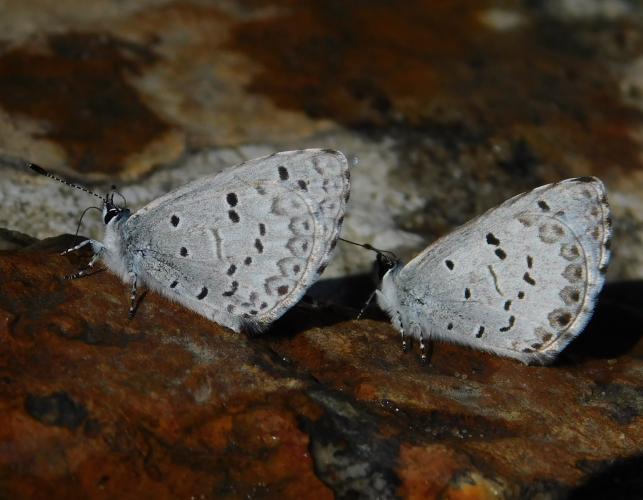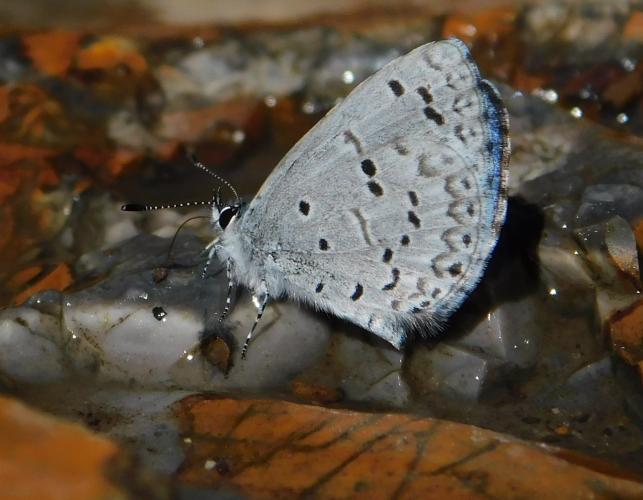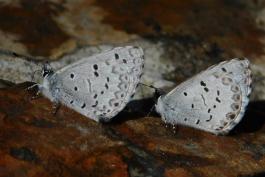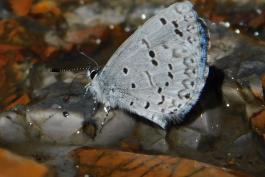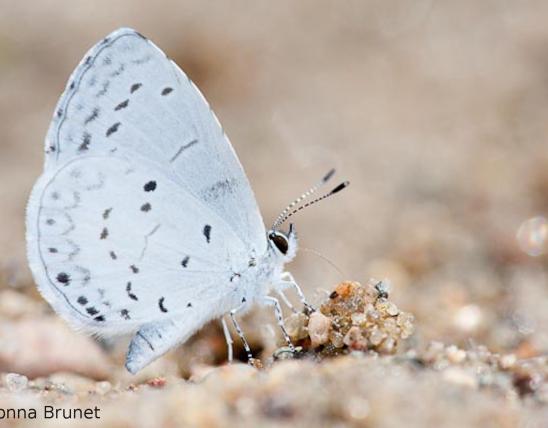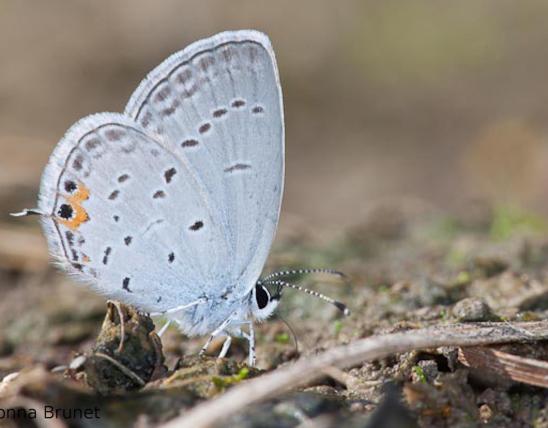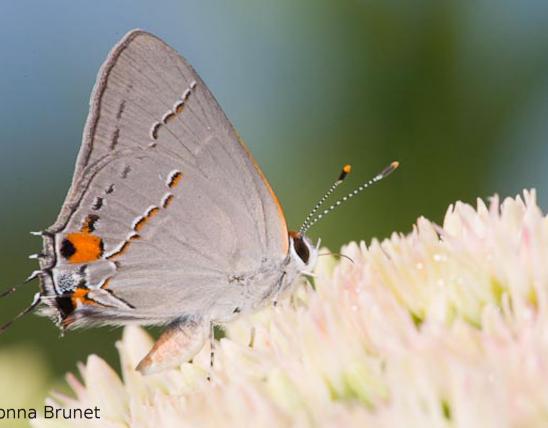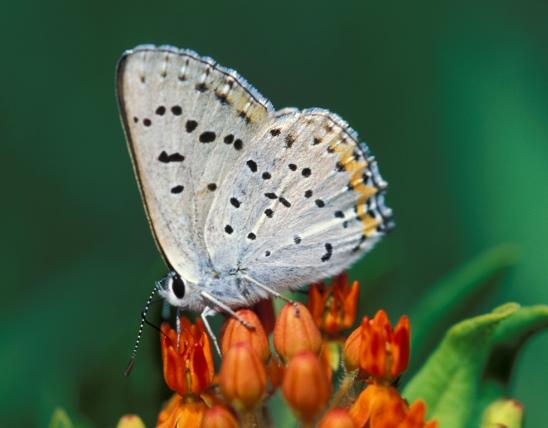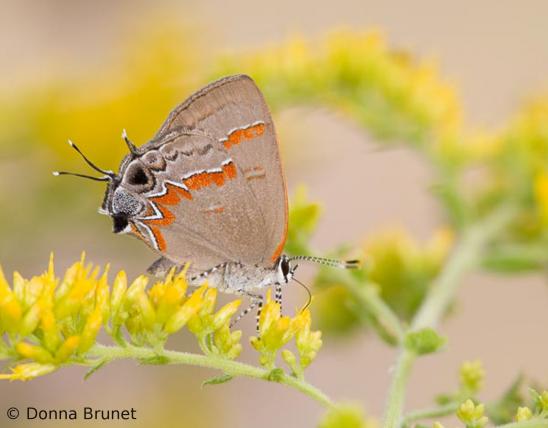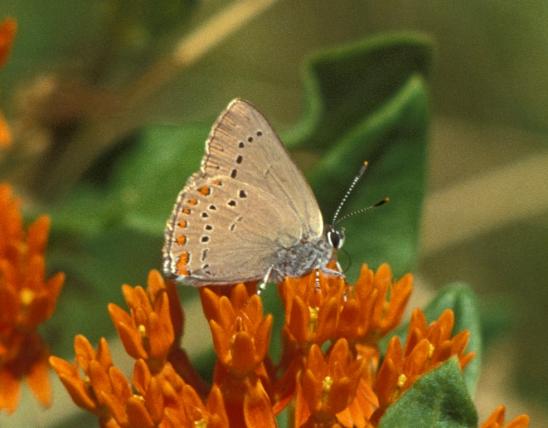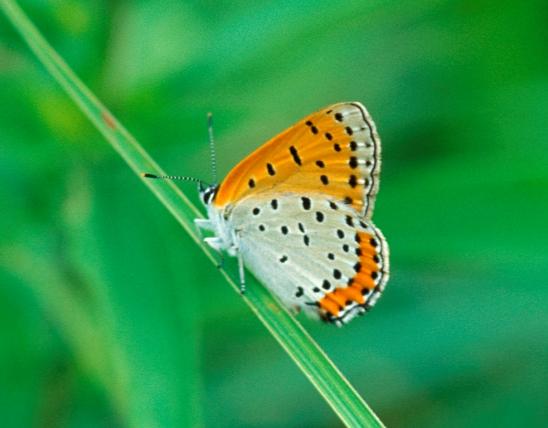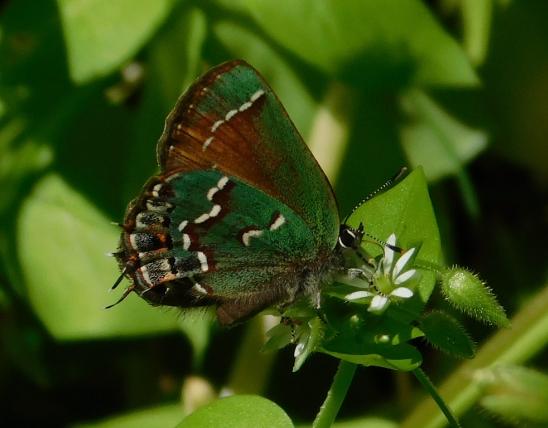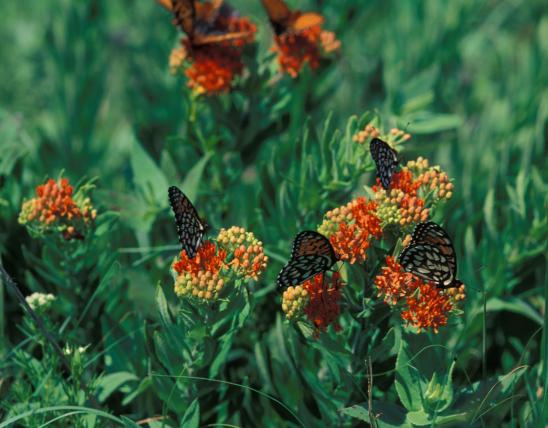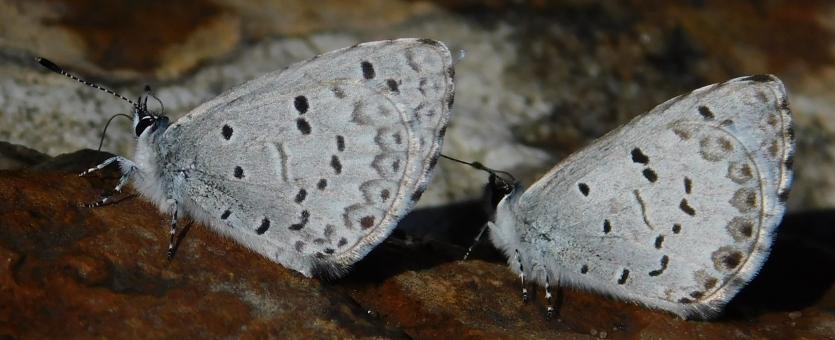
The spring azure is among the first butterflies of the year. The early spring appearance helps you identify this species. The undersides of the wings are pale gray to whitish, with small dark spots. The upper sides of the wings are usually hard to see, since these butterflies rarely pose with their wings held open, but the upper side of males is iridescent blue, while the upperside of females is blue with a dark border. There are no hindwing “tails” and no orange spots.
The larvae are variable, downy green to yellowish green to reddish brown, with a darker stripe along the back and oblique (slanting) greenish side lines. The head is brown with black edging.
Similar species: We have several other species of blues, azures, and hairstreaks. Here are the ones most likely to be confused with the spring azure:
- The very similar summer azure (C. neglecta) was originally thought to be the same species as the spring azure. Note, however, that the three broods of summer azure occur in mid-May through November. Older references that include a “spring form” and “summer form” listed under “spring azure” were written before the summer azure was split away as a separate species.
- The eastern tailed-blue (Cupido comyntas) is another common small blue butterfly, but it has a tail on each hindwing and at least one crescent orange spot on the outer edge of the hindwing. Also, while azures are frequently seen among the leaves of trees, the eastern tailed-blue usually flies very low to the ground.
- There is a good chance that the “spring azure” may actually comprise several different species, which simply haven’t been described yet.
Wingspan: 1–1¼ inches.
Statewide.
Habitat and Conservation
The spring azure is a true harbinger of spring. It is our earliest native butterfly to emerge from overwintering pupae, and it often flies before the wild plum buds have opened.
Spring azures can be found in a variety of habitats from brushy fields and other open areas to wooded habitats, roadsides, and gardens.
They flutter around so actively, it can be hard to see them well. Wait patiently for them to alight on a flower, or to take moisture from a puddle, wet rock, damp sand, or even a bird dropping.
Food
Caterpillars feed on the flowers and fruits of a variety of woody and nonwoody plants, including flowering dogwood, New Jersey tea, blue-eyed Mary, and many more.
Adults take nectar from many kinds of flowering plants, including wild plum, early-blooming milkweeds and dogbanes, New Jersey tea, blackberries and their relatives, and other springtime flowers.
Status
Single-brooded resident species.
Life Cycle
There is only one brood, with adults flying from the middle of March into May. Males are most active in the afternoons and evenings as they patrol for females and repel other males.
Females lay single eggs on the flower buds of a wide variety of woody host plants, and the caterpillars feed on flowers and fruits. Caterpillars are tended by ants, which protect them from insect predators and feed on the sugary liquid excreted by the caterpillars.
In winter, this species hibernates in the chrysalis stage.
It is one of the earliest species to emerge in spring. As adults, they probably only live or a few days, mating and laying eggs within hours of emerging from the chrysalis.
Human Connections
After the dreariness of winter, we are ready to see signs of spring. In late March, the woods are still mostly drab, but on the ground, toothwort, bloodroot, and Dutchman’s breeches are blooming among the dead leaves; serviceberry and wild plums are waving their little white clusters amid the still-leafless woods; and here are these dainty little butterflies dancing in circles near a creek. It makes our hearts leap for joy.
Ecosystem Connections
The spring azure’s appearance almost exactly coincides with the bloom time of wild plums, which are a favorite nectar plant. Phenology is the study of the interconnected, cyclic, seasonal timing of events in the natural world. It’s an ancient realm of human knowledge, and one that science is still busy cataloging.
This species provides a great example of mutualism, which can be defined as an interaction between two different species where both species benefit. In this case, caterpillars provide ants with sugary honeydew to eat, while the caterpillars are protected by the ants from insect predators.
